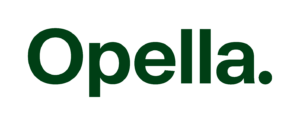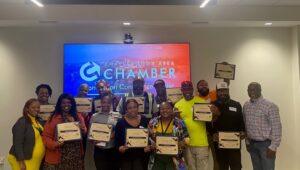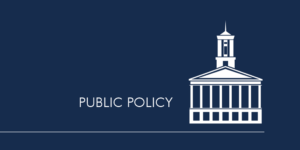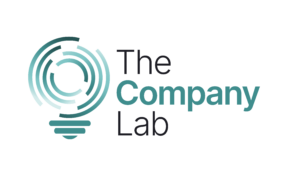Through their patented 3D printing process, Branch Technology architects and coders are pushing the envelope of construction and design – and actually launching the Gig City’s name into the stratosphere.
Branch Technology is the brainchild of Founder and CEO Platt Boyd — an Auburn-educated architect who leveraged his years of experience to create the first-ever freeform 3D printing process of its kind. And the story of how this revolutionary technology came to be begins with a sketch, a simple drawing Boyd etched during a late night in 2013.
Boyd was working as a partner at his architecture firm in Montgomery, Alabama when he came up with the idea that would eventually become Branch Technology. He drew his first three-dimensional matrix using a 3D-printing pen and found that the structure weighing only half an ounce could hold 18 pounds of books. After 15 years in the industry, Boyd left his job to chase an idea, beginning with a trip to Detroit, Michigan where he learned how to program industrial robots. Through trial and error, Boyd and his initial team created the extrusion mechanism that would become Branch Technology’s 3D printer. Using this method, they were able to create a structure that – while weighing in at just over two ounces – could hold 130 pounds. It was then Boyd realized his idea worked.
Encouraged by their progress, Boyd and his team started a partnership with Kuka Robotics that continues to this day. The company’s CEO agreed to lend them a three-foot industrial robot. With this single robot, the Branch Technology team was able to create their first free-form structure and began creating larger assemblies that highlighted the geometric freedom and structural capabilities of their designs. The team debuted their technology in Chattanooga during GigTank, a 12-week program run by The Company Lab. Upon finding this community of tech entrepreneurs in Tennessee, the team of three people and one robot moved their operations into the INCubator, a startup program run by the Chattanooga Area Chamber of Commerce from the Hamilton County Business Development Center.
Branch Technology now operates out of a 50,000-square-foot manufacturing facility, outfitted with 17 Kuka robots. In December of 2020, the company closed an $11 million funding round led by EquipmentShare, bringing the company’s overall funding to $22 million.
The Secret to Design Freedom: Cellular Fabrication
Traditional 3D printing is done by layering one row of material at a time. This process, known as fused deposition modeling, is most commonly seen in desktop 3D printers where a larger container encases the creation of the object inside. This means that the printer must always be bigger than the product it’s creating. While this method is suitable at small scales, it becomes limited and inefficient when upscaled for construction. Layered concrete printing has been the industry standard in construction for some time, despite falling under the same limitations that fused deposition modeling brings. The gantry has to be larger than the building being printed, heavy machinery needs to be transported to the job site and only a single type of material can be used.
Branch Technology’s fundamental innovation in the 3D printing space is a process called Cellular Fabrication (C-Fab). Inspired by the natural designs of cellular structures, this process relies on robotic arms outfitted with extruders that freeform 3D print polymers into geometric shapes. These fiber-reinforced polymers solidify in three-dimensional space — resulting in lightweight, optimized geometries that create larger structures with less material at a faster rate. This process produces the same volumetric quantity of traditional large-scale and construction 3D printers with 20 times less material, while still boasting a remarkable strength-to-weight ratio.
Branch Technology leverages this innovative process in three different product offerings: BranchClad, StoPanel 3DP, and their original product, BranchMatrix. Through these products, Branch Technology has been able to express a level of creative freedom unseen in construction until now. In 2016, the company partnered with SHoP Architects to create “Flotsam & Jetsam,” a monumental 3D-printed installation that marked the entrance to the Design Miami Exhibition. In 2018, Branch fabricated the “Nature Clouds” display that hangs in Chicago’s Field Museum of Natural History. That same year, Branch Technology erected a pavilion for the OneC1TY neighborhood in Nashville, Tennessee. Standing at 20 feet tall and 42 feet wide, this pavilion currently ranks as the largest 3D-printed structure in the world. The company also broke records earlier this year by creating the first-ever 3D-printed GFRC building facade for Chattanooga’s Tennessee Valley Federal Credit (TVFCU) building. Branch Technology combined the beauty of Chattanooga’s natural surroundings with TVFCU’s iconic wave to create an undulating facade pattern that identifies the TVFCU building as one of the most iconic landmarks on the Southside.

Their most recent project, “Climbs Sculpture,” stands in the concourse of Chattanooga Metropolitan Airport. Inspired by the unique geological formations that grace the city, the sculpture is designed to attract visitors who enter the airport and promote Chattanooga’s reputation for innovation and entrepreneurship. “Climbs Sculpture” came as a collaboration between Branch Technology, Chattanooga Metropolitan Airport and the Greater Chattanooga Economic Partnership. The 16-foot-tall sculpture serves as the focal point for the ChattanoogaCalling.Com Center, providing information about life in Tennessee.

Leading these projects is a dedicated team of engineers, architects and designers who come together to build awe-inspiring industrial creations. While technology is certainly a great advantage for Branch Technology, the company culture they have developed definitely produces an environment where innovations continue to emerge.
Culture at the Core
As the economy rebuilds momentum following the initial stages of the pandemic, companies have struggled to attract and retain candidates. While they weren’t spared the financial obstacles of the pandemic, Branch Technology held a remarkably low employee attrition rate throughout 2020. Guiding the company’s culture are six core values. Boldly displayed on the company walls, the values include: wise stewardship, designed beauty, intense collaboration, other-centered, relentless execution, humble genius. TREND had the privilege of speaking with some of Branch Technology’s core team members to learn more about how these values permeate their work environment:

Trend: Tell me about your journey. What opportunities lead you down the path of 3D design?
Rees: I always had a natural aptitude for technologies that could streamline design-to-delivery workflow within architecture, using technology to fuel better processes to build better buildings. I got my graduate degree at the University of Pennsylvania, where I focused on computational architecture, using computers to develop new processes for designing buildings. After that very technical program, I started implementing [my education] in the professional realm. When I came across the opportunity here at Branch Technology to be more hands-on, I took it.
Trend: What attracted you to Branch Technology? How did your partnership start?
Rees: My background is in architecture, and I had some experience in direct digital fabrication so when I learned about Branch it seemed like a good fit for me and my background. I’m one of the earliest employees. At that point, we were just five people at the INCubator. The idea that we could democratize design and bring high-end design to lots of people was compelling. I was able to utilize my background and skillset. I’ve been here for almost six years working on the design and project management side — moving towards just the design side now.
Trend: Why did you decide to get in on the ground floor of this company?
Rees: I saw the opportunity to have a hands-on approach, to help designers navigate the vast landscape of innovative solutions. In my past I was always that person looking for the next most innovative thing, [Branch] would definitely be one of them.
Trend: What does the idea of “democratizing design” mean to you?
Rees: Right now, a lot of high-end quality architecture is very expensive. Especially when it comes to form-driven design, or design that is literally and figuratively outside the box. Right now, there are a lot of cookie-cutter buildings. If you want to get outside of that, it gets very expensive quickly. Democratizing design is the idea that you can have formal buildings and solutions within a reasonable, if not competitive, budget.
Trend: Is this something that can be done on a large scale?
Rees: The goal of the company is to scale. It helps designers offer their clients more solutions. It also provides general contractors with a solution that’s easy to install. Right now, there are huge labor shortages within the construction industry. The automation that we bring can help resolve that issue. We also offer the benefits of prefabrication. Everything we build can be very high tolerance so when it gets to the field it’s very easy to put together and the building is very tight.
Trend: What kind of people are you excited to work with?
Rees: Branch definitely has a strong culture. We’ve said we’re an ecosystem of people because we have mathematicians, designers, mechanical engineers, roboticists, business strategists and software programmers. We are a community of very diverse individuals. I’m always learning something new and so is everyone else. There is a lot to learn from one another which keeps things exciting.

Trend: What attracted you to Branch Technology? How did your partnership start?
Vereschak: I worked for a company called SHoP Architects and we commissioned Branch on a project for Design Miami. It was really cool to see the company at an early stage and watch them grow over a couple of months. What attracted me to Branch is not just the technology, but their ethos and mindset of a company treating [employees] more like a family. It was something I wanted to be a part of early on and help develop as well. Along the way, we developed really cool forms and structures that are revolutionizing the construction industry.
Trend: Are there any projects that stand out to you the most?
Vereschak: The OneC1TY pavilion in Nashville and the “Nature Clouds” in the Field Museum. Those were happening in parallel and were quite large. It was pretty cool to take what we had learned from the Design Miami pavilions and put that into play in those projects. Recently it would be the TVFCU facade here in town. I was the project manager on that as well as the design team. That was great for the growth of the company, being a new product, but also for me being able to shepherd that whole project through.
Trend: What kind of talent are you hoping to attract?
Vereschak: We have a melting pot of all sorts of people. There are people that have physics degrees and engineering, computer coding skills as well as us in design. All the cool things in the design and engineering world are happening here. There are always departments developing and branching off, it’s just really great to see.
Trend: What makes you excited about the future of your company? Where would you like to see your company in 10 years?
Vereschak: I’d like to see us keep growing our application. Right now, we’re doing smaller surface areas and building heights. I want to see that grow and be limitless on what we can do. I see us going there, we’re certainly further along than we’ve ever been.

Trend: What attracted you to Branch Technology? How did your partnership start?
Wykoff: Branch is an amazing place. The work it does and the amazing team of Branchers made it an attractive place to work. Prior to coming on board, I’d gotten to know Platt Boyd and concluded that my interests and passions aligned well with his and where he wanted to take the company.
Trend: What are some of the benefits of working from Chattanooga?
Wykoff: Chattanooga rocks! I grew up in Las Vegas and spent 12 years in Atlanta before moving to Chattanooga. Nothing compares to our beloved city. We’ve not found it difficult to recruit talent into Chattanooga. We’ve relocated people from California, New York, New Jersey, Oregon, North Carolina and elsewhere who were excited to work for Branch and also very excited to live in Chattanooga.
Trend: What are some of the challenges facing the company? What keeps you going through these challenges?
Wykoff: Branch faces many of the challenges other startups face: recruiting top-notch talent, managing finite cash flows, telling our story well and so on. But unlike most startups, we’re not one of many just doing the same thing others are doing. We’re one of one, truly doing something that’s unique, revolutionary and leads to human flourishing. We’ve got something really special, but since we’re not yet at our best we’ll keep pushing through these challenges in pursuit of our core purpose to create a beautifully built world.
Trend: What inspired your company’s core values?
Wykoff: Our six core values are the result of several deep conversations Platt and I had several years ago about who we are. We wanted every employee and every candidate to know the standard against which they’d be measured. We wanted the core values to be easily memorized and yet deeply profound. All six are essential. They’re the filter for all of our recruiting. They’re the lens through which we do performance reviews. And they’re the common parlance infiltrating our relationships, our decisions, and our day-to-day work. Anyone who’s met the team would agree that the result is beautiful. We hire “humble geniuses” who do brilliant work but don’t boast about it. We expect “other-centeredness,” always having the mindset that we is greater than me. We strive for “relentless execution” to always get done what we say we’ll get done, even if it takes a herculean effort. We promote “designed beauty” where innovation drives complexity toward elegant simplicity. We encourage “intense collaboration” where healthy ideological conflict is always passionate but never personal. And we embrace “wise stewardship” knowing that all of our resources are finite and to be used for their highest and best purpose
Trend: What makes you excited about the future of your company?
Wykoff: Our technology continues to amaze me. From design to software to robotics to finished product, it’s stunning to consider what we can create. The built world is in such need of innovation and resource stewardship, and Branch has a significant opportunity to lead the advancement of those goals. As humanity continues to look to the skies for what extraterrestrial-built worlds might look like in the decades ahead, it’s exciting that Branch is already part of that conversation.

Trend: What are some of the biggest inspirations behind your work?
Boyd: There are things in the natural world that are amazingly beautiful. It’s a sense of wonder when you start to look at the amount of intelligence, beauty, integrated structure and elegant forms. You look at nature and then you look at how we construct buildings, and they’re just boxes. How might we make our buildings more like the elegant structures we see in nature? That’s really the inspiration behind what we’re doing.
Trend: Tell us about your experience at the INCubator. Is there anything you miss about those days?
Boyd: I loved that building and the little community there. There was a bunch of people striving together and trying their hardest. The INCubator is an awesome thing. I think it’s fairly unique that in Chattanooga there’s a place that has industrial space in the same building as office space. With a lot of 3D printing and robotics, you need that larger space where it’s OK to get messy. It was perfect for us.
Trend: What challenges do you face as a CEO? What keeps you going through these challenges?
Boyd: Coming into this, I had never been a CEO. I had been a partner at a firm, but that was it. The learning curve when you start something like this is practically vertical. You have to learn so much, so fast. It’s been the most stretching, wonderful experience and the hardest thing I’ve ever done. It’s physically draining and emotionally draining. It’s amazingly hard. Thankfully, I have friends and mentors I can talk to about what the reality is. I’m very thankful for those people. I’m very thankful for supportive investors that have been on that journey with us. You have to hold on to a rock-solid conviction that what you’re doing can change the world.
Trend: What would you say to entrepreneurs who want to pursue their idea?
Boyd: There are a lot of different factors. I would say to weigh all the risks, but don’t be afraid to take the leap. If it’s a revolutionary idea that’s classified as a startup, gathering investors is easier once you make the full commitment. You have to know that what you’re doing is solving a fundamental problem, has a large market and that you have great people with you along the journey. One of the reasons we moved to Chattanooga is because it’s easier to recruit from here. This is a great place to draw in an awesome team.
Trend: What has kept your employee attrition rate so low?
Boyd: I think it’s the culture here. That’s what people stick around for. If you have meaning and purpose with what you’re doing, people are engaged in that. It really helps to solidify a culture and why you’re doing what you’re doing. That’s why people have been here. We get applications from all over the place from candidates interested in leaving world-class institutions to come here. I think that’s pretty amazing. We’re slow on recruiting because we want the people here to be a good fit.
Trend: As your company pushes toward space, what applications does this technology have here on earth?
Boyd: We have a NASA contract. Their goal is to use in situ material to build on the moon. If you can do that there, you can do that with sand or dirt or indigenous materials anywhere. I think this will have legs way beyond the NASA project. The potential is huge.

Extraterrestrial Technology That Changes the World
Branch Technology entered the space race after winning NASA’s Centennial Challenge in 2017. The company is now collaborating with material scientists at Stanford University and Apple headquarter design firm, Fosters + Partners, to leverage their C-Fab technology toward creating 3D printed structures on the moon. Once completed, the process would allow NASA to 3D print using in-situ lunar material. Branch expects that a working demonstration on the lunar surface could be available in five years, with a livable structure potentially available in 15 years. While the interplanetary implications of this technology are exciting, Branch continues its mission of making a difference here on earth. Branch is working on building three chicken coops for a refugee camp in Western Uganda. These coops will provide a micro-enterprise for the region and support approximately 10,000 people. For this company, ushering in a new technology is not only about financial gain, it’s about finding ways to use this technology toward advancing society for the better. Whether it’s by conserving materials to reduce the planet’s waste or lowering production costs to provide beautiful designs for all, the practices that Branch Technology has in place ensure that as the company grows the community grows also.








